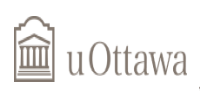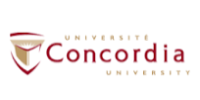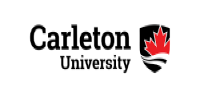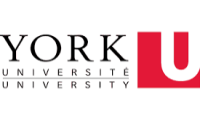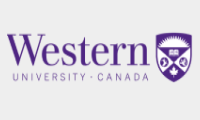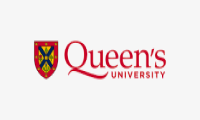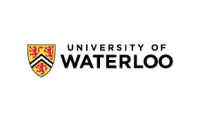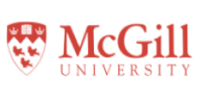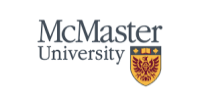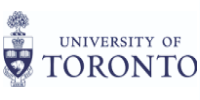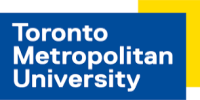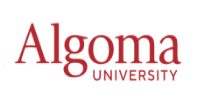torontoeschool
41 Metropolitan Rd., Scarborough ON, M1R 2T5 (HWY 401/Warden)
torontoeschool.com 647-352-6288, 416-637-2632
| Course Name/Grade/Type: | Academic English |
| Course Code: | ENG1D |
| Credit Value: | 1.0 |
| Curriculum Policy : | Growing Success: Assessment, Evaluation, and Reporting In Ontario Schools, 2010. Ontario Curriculum, Grades 9 and 10: English 2007 |
| Department: | English |
| eveloped By/Date: | Toronto Eschool, 2016 |
| Revised By/Date: | Toronto Eschool, 2016 |
| Course Description: | This course introduces and extends upon students’ understanding of reading and comprehension, writing conventions, media and oral communication. Through this course students will have the chance to develop their reading and comprehension skills using various strategies; they will learn and cultivate good strategies for the writing conventions in grammar, punctuation, vocabulary and spelling; they will learn to interpret oral and media texts and create their own. This course is comprised of 5 units of study with assignments at the end of every lesson, end of unit assessments, a mid-term and one culminating final exam. |
| Unit | Course Content and Overall Curriculum Expectations | Time |
|---|---|---|
| 1 | Introduction to Writing Conventions: The Basics By the end of this unit, students will: 1. Identify correct writing conventions and errors in their work and others’. 2. Utilize writing conventions to write and proofread work. |
10 hours |
| 2 | Novel Study: The Hunger Games By the end of this unit, students will: 1. Read text for meaning, analysing key themes, characters and ideas. 2. Generate ideas about the text and use other sources to support them. 3. Identify and evaluate the language of the novel. 4. Identify and demonstrate presentation strategies. |
24 hours |
| 3 | Media Studies: Advertising By the end of this unit, students will: 1. demonstrate an understanding of media texts and their purposes 2. identify and describe some key features of media texts and advertisements 3. evaluate the effectiveness of advertising conventions 4. create a media text using conventions and techniques |
18 hours |
| 4 | Poetry By the end of this unit, students will: 1. demonstrate an understanding of poetic devices and identify their use in poems 2. make connections between poetic themes and the outside world 3. listen to and understand oral poetic texts, identifying the effect of oral presentations 4. understand poetic forms and create their own |
14 hours |
| 5 | Literary Study: Romeo and Juliet By the end of this unit, students will: 1. identify and understand the language of the play 2. identify and describe key themes and concepts in the play 3. make connections between the themes of the play and modern texts 4. establish an identifiable voice and modify the language to suit audience, tone, and purpose 5. generate and focus ideas for potential writing tasks 6. analyze language and quotations |
24 hours |
| 6 | Final Exam | 4 hours |
| Total | 110 hours |
Teaching / Learning Strategies
As in a conventional classroom, instructors employ a range of strategies for teaching a course:
- Clear writing that connects English to real life texts
- Examples of activities and opportunities to learn along the way
- Direct instruction and coaching on student work by the teacher
In addition, teachers and students have at their disposal a number of tools that are unique to electronic learning environments:
- Electronic simulation activities
- Video presentations
- Discussion boards and email
- Assessments with real-time feedback
- Interactive activities that engage both the student and teacher in the subject
- Peer review and assessment
- Internet Instructional Videos
All course material is online, no textbook is required. Assignments are submitted electronically. Tests are completed online at a time convenient for the student, and the course ends in a final exam which the student writes under the supervision of a proctor approved by Toronto eSchool at a predetermined time and place. The final mark and report card are then forwarded to the student’s home school.
Students must achieve the Ministry of Education learning expectations of a course and complete 110 hours of planned learning activities, both online and offline, in order to earn a course credit. Students must keep a learning log throughout their course which outlines the activities they have completed and their total learning hours. This log must be submitted before the final exam can be written.
The chart below indicates some general examples of online and offline activities.
| Online Learning Activities | Offline Learning Activities |
|---|---|
| Watching instructional videos | Reading materials for course |
| Watching additional resources videos | Studying instructional material |
| Completing online timed assignments | Practicing skills |
| Contributing to Forums | Completing assignments |
| Uploading video presentations | Completing essays |
| Communicating with instructor | Preparing presentations |
| Participating in live conferences | Reviewing for tests and exams |
| Practicing through online quizzes | Researching topics on internet |
| Reviewing peer submissions | |
| Assessing peer presentations | |
| Completing online timed exam |
Students are expected to access and participate actively in course work and course forums on a regular
and frequent basis. This interaction with other students is a major component of this course and there
are minimum requirements for student communication and contribution.
Seven processes will form the heart of the teaching and learning strategies used.
- Communicating: to improve student success there will be several opportunities for students to share their understanding both in oral as well as written form.
- Reading Comprehension:several strategies will be taught and employed for before, during and after reading to increase comprehension of all types of texts.
- Analysis and Evaluation: students will be taught to think about and discuss the content of the texts and think about the deeper meaning as well as components of the language.
- Synthesis: creating their own studied texts as well as responses to the texts to ensure they are able to put to practice all of the knowledge of conventions and form they have learned.
- Reflection: reviewing and reflecting on work, the learning process, and developing skills is an important facet of improvement. Students will assess themselves and others in order to gain insight on their own strengths and areas for improvement.
- Writing Conventions: students will be encouraged to practice correct and effective grammar, punctuation, spelling, and vocabulary in all assignments integral to the course.
Connecting: connecting texts and concepts to the world they are familiar with so that they can extend their knowledge on a more personal level will help with thoughtfulness, analysis, and synthesis. - Connecting: connecting texts and concepts to the world they are familiar with so that they can extend their knowledge on a more personal level will help with thoughtfulness, analysis, and synthesis.
Assessment and Evaluation
TorontoeSchool’s approach to assessment and evaluation is based on the Ontario Ministry of Education’s Growing Success 2010 document. Assessment is the process of gathering information that accurately reflects how well a student is achieving the curriculum expectations in a subject or course.
The primary purpose of assessment is to improve student learning. Assessment for this purpose is seen as both “assessment for learning” and “assessment as learning”. As part of assessment for learning, teachers provide students with descriptive feedback and coaching for improvement. Teachers engage in assessment as learning by helping all students develop their capacity to be independent, autonomous learners who are able to set individual goals, monitor their own progress, determine next steps, and
reflect on their thinking and learning. Toronto eSchool teachers use evidence from a variety of sources in their assessment. These include formal and informal observations, discussions, conversations, questioning, assignments, projects, portfolios, self-assessments, self-reflections, essays, and tests.
Assessment occurs concurrently and seamlessly with instruction. Our courses contain multiple opportunities for students to obtain information about their progress and achievement, and to receive feedback that will help them improve their learning. Students can monitor their own success through the tracking of learning goals and success criteria throughout all courses.
Summative “assessment of learning” activities occur at or near the end of periods of learning. Evidence of student achievement for evaluation is also collected over time from different sources, such as discussions, conversations and observation of the development of the student’s learning. Using multiple
sources of evidence increases the reliability and validity of this evaluation. The evaluations are expressed as a percentage based upon the levels of achievement.
Strategies for Assessment and Evaluation of Student Performance
| Assessment as Learning | Assessment for Learning | Assessment of Learning |
|---|---|---|
| Students are asked to submit an assignment at the end of every lesson wherein they have an opportunity to put into practice the skills they have learned and demonstrate these skills to their instructor as part of their overall grade. There is a rubric available at the end of every unit in the assessment section to review which covers all of the expectations for the lesson assignments. | In all Units, students are expected to submit a mid-unit assignment directly to the instructor. The assignment provides a number of questions, problems, and activities balanced around the four categories of the Achievement Chart: Knowledge and Understanding, Thinking, Application, and Communication.The instructor grades each assignment and provides descriptive feedback and the student is asked to provide feedback on the feedback. |
Each Unit ends with an assignment that is submitted directly to the instructor. A grade is recorded based on the Learning Goals and Success Criteria for that Unit. Students may be asked to resubmit parts of the assignment, or a modified assignment. |
| Students will be asked to submit drafts to the instructor as well as post them on discussion forums. Feedback from both the instructor and the student can help the student advocate for their own learning. |
The discussion forum is an area where students can engage in the learning and thinking process with each other, share ideas, reflect, and pool resources and strategies which will help in future assignments. | A Mid-Term Assignment and end of unit assessments ask students to synthesize their skills and knowledge in a culminating task that combines several units into one cohesive presentation..A grade is recorded and the instructor can initiate a conversation with the student if there are concerns. |
| Instructors communicate with their students through email or live chat sessions. Students can raise concerns and reflect on their own personal goals and learning during these one to one conversations with their instructors. | At the end of the course, students complete a final exam that covers all the material studied in the course. |
Example of rubrics for all unit assignments
Assessment Rubric ENG1D
Learning Goals
|
||||
| Success Criteria | Level | |||
| 1 | 2 | 3 | 4 | |
| I can use grammar conventions to correctly communicate my intended meaning clearly | ||||
| I can use punctuation correctly to communicate my intended meaning | ||||
| I can use knowledge of spelling rules and patterns, several different types of resources and appropriate strategies to spell familiar and new words correctly |
||||
| I can build vocabulary for writing by confirming word meanings and reviewing word choice | ||||
| I can use appropriate decoding strategies to read and understand unfamiliar words | ||||
| Teacher Feedback:
|
||||
| Student Feedback:
|
||||
Growing Success articulates the vision the Ministry has for the purpose and structure of assessment and evaluation techniques. There are seven fundamental principles that ensure best practices and procedures of assessment and evaluation by Toronto eSchool teachers. Assessment and evaluations:
- are fair, transparent, and equitable for all students;
- support all students, including those with special education needs, those who are learning the language of instruction (English or French), and those who are First Nation, Metis, or Inuit;
- are carefully planned to relate to the curriculum expectations and learning goals and, as much as possible, to the interests, learning styles and preferences, needs, and experiences of all students;
- are communicated clearly to students and parents at the beginning of the school year or course and at other appropriate points throughout the school year or course;
- are ongoing, varied in nature, and administered over a period of time to provide multiple opportunities for students to demonstrate the full range of their learning;
- provide ongoing descriptive feedback that is clear, specific, meaningful, and timely to support improved learning and achievement;
- develop students self-assessment skills to enable them to assess their own learning, set specific goals, and plan next steps for their learning.
The Final Grade
The evaluation for this course is based on the student’s achievement of curriculum expectations and the demonstrated skills required for effective learning. The percentage grade represents the quality of the student’s overall achievement of the expectations for the course and reflects the corresponding level of achievement as described in the achievement chart for the discipline. A credit is granted and recorded for this course if the student’s grade is 50% or higher. The final grade for this course will be determined as follows:
- 70% of the grade will be based upon evaluations conducted throughout the course. This portion of the grade will reflect the student’s most consistent level of achievement throughout the course, although special consideration will be given to more recent evidence of achievement.
- 30% of the grade will be based on a final exam administered at the end of the course.
The general balance of weighting of the categories of the achievement chart throughout the course is
| Knowledge and Understanding | 25% |
| Thinking | 25% |
| Communication | 25% |
| Application | 25% |
|---|
The Report Card
Two official report cards are issued – midterm and final. Each report card will focus on two distinct but related aspects of student achievement. First, the achievement of curriculum expectations is reported as a percentage grade. Additionally, the course median is reported as a percentage. The teacher will also provide written comments concerning the student’s strengths, areas for improvement and next steps.
Second, the learning skills are reported as a letter grade, representing one of four levels of accomplishment. The report cards contain separate sections for the reporting of these two aspects. The report card also indicates whether an OSSD credit has been earned.
The Ontario Student Transcript
The Ontario Student Transcript (OST) is an official document issued by public, Catholic, inspected private schools in Ontario or Ontario International Schools. The OST contains a list of the courses completed, withdrawals from courses occurring 5 days or longer after the midterm report card has been issued, repeated courses in Grades 11 and 12, and equivalent credits granted for work in non-inspected Ontario private schools or schools outside of Ontario. The OST is stored in the Ontario Student Record (OSR) and retained for 55 years after a student retires from school. If the student is currently attending another school – public or private – and is simply taking a single course from Torontoeschool, then that student’s OSR continues to reside at the school that the student is attending. Upon completion of the course Torontoeschool will send a copy of the OST back to the home school where the course will be added to the ongoing list of courses on the student’s transcript.
The Achievement Chart: Overall
The purpose of the achievement chart is to:
- provide a common framework that encompasses all curriculum expectations for all courses;
- guide the development of high-quality assessment tasks and tools;
- help teachers plan instruction for learning;
- assist teachers in providing meaningful feedback to students;
- provide various categories/criteria with which to assess and evaluate students’ learning.
The achievement chart provides a reference point for all assessment practice and a framework within which achievement will be assessed and evaluated.
- The chart is organized into four broad criteria; Knowledge / Understanding, Thinking / Investigation, Communication, and Application.
- The achievement chart describes the levels of achievement of the curriculum expectations within each subset of criteria.
- The “descriptor” indicates the characteristic of performance, with respect to a particular criterion, on which assessment or evaluation is focused.
- A specific “qualifier” is used to define each of the four levels of achievement. It is used along with a descriptor to produce a description of performance at a particular level.
- The following table provides a summary description of achievement in each percentage grade range and corresponding level of achievement:
| A Summary Description of Achievement in Each Percentage Grade Range and Corresponding Level of Achievement | ||
| Percentage Grade Range |
Achievement Level |
Summary Description |

 "Hey, Rebecca, Thank you so much for your help. I don't think there is anyone in education who helped me more than you.
I got the final confirmation email and finally got into McMaster thank you for all your help.
I owe my success in university admission to you and Toronto eLearning School."
Hadi Khan, Life Science in McMaster University
"Hey, Rebecca, Thank you so much for your help. I don't think there is anyone in education who helped me more than you.
I got the final confirmation email and finally got into McMaster thank you for all your help.
I owe my success in university admission to you and Toronto eLearning School."
Hadi Khan, Life Science in McMaster University "My name is Kasra Zarbakhsh in Iran. I enjoyed my study at Toronto eLearnihng School with the kind staff. I suggest studying at eLearning School for those International or Canadian students who want to earn the OSSD.
I earned eight credits with eLearning School, got two university offers, and got an OSSD.
Warm regards to Principal & Vice-Principal of Toronto eLearning School, Mr. Bowyer & Ms. Wang."
Kasra Zarbakhsh, Business Administration of Legal Studies in Trent University.
"My name is Kasra Zarbakhsh in Iran. I enjoyed my study at Toronto eLearnihng School with the kind staff. I suggest studying at eLearning School for those International or Canadian students who want to earn the OSSD.
I earned eight credits with eLearning School, got two university offers, and got an OSSD.
Warm regards to Principal & Vice-Principal of Toronto eLearning School, Mr. Bowyer & Ms. Wang."
Kasra Zarbakhsh, Business Administration of Legal Studies in Trent University. "Hello miss, I have got my marks. Thank you so much at the end. you helped me a lot with this course. Your feedbacks were very effective to me.
I got many experiences with this. I really appreciate your kindness to refer my mails and reply them all and give feedbacks for my resubmitted assignments as well.
Lucky to have a teacher like you miss. Thank you so much and wish your future works with my best."
Naveen Srimal Kandamulla, Medicine in Manipal Medical University
"Hello miss, I have got my marks. Thank you so much at the end. you helped me a lot with this course. Your feedbacks were very effective to me.
I got many experiences with this. I really appreciate your kindness to refer my mails and reply them all and give feedbacks for my resubmitted assignments as well.
Lucky to have a teacher like you miss. Thank you so much and wish your future works with my best."
Naveen Srimal Kandamulla, Medicine in Manipal Medical University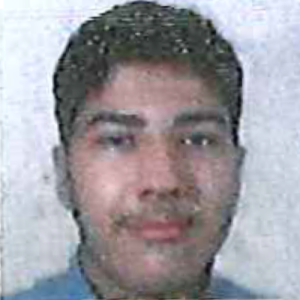 I am writing to express my deepest gratitude for your unwavering support and guidance throughout my academic journey with eLearning School.
Your dedication and expertise have been instrumental in my success in the course, and I cannot thank you enough for your invaluable contributions.
Thank you for being an exceptional educator at eLearning School and for making a positive impact on my life. I wish you continued success and fulfillment in your teaching career.
With utmost respect and gratitude, Zaid Hassan
I am writing to express my deepest gratitude for your unwavering support and guidance throughout my academic journey with eLearning School.
Your dedication and expertise have been instrumental in my success in the course, and I cannot thank you enough for your invaluable contributions.
Thank you for being an exceptional educator at eLearning School and for making a positive impact on my life. I wish you continued success and fulfillment in your teaching career.
With utmost respect and gratitude, Zaid Hassan "Dear Rebecca, Thank you very much for attaching Michael's OSSD and transcript.
Michael has received all his offers from Ryerson University, York University, University of Toronto and Mississauga, U of T.
We would also like to thank you for your wishes. We are very proud of Michael and his accomplishments! Thank you once again."
Anna k., ASSISTANT REGISTRAR, VICTORIA COLLEGE IN THE UNIVERSITY OF TORONTO
"Dear Rebecca, Thank you very much for attaching Michael's OSSD and transcript.
Michael has received all his offers from Ryerson University, York University, University of Toronto and Mississauga, U of T.
We would also like to thank you for your wishes. We are very proud of Michael and his accomplishments! Thank you once again."
Anna k., ASSISTANT REGISTRAR, VICTORIA COLLEGE IN THE UNIVERSITY OF TORONTO "Dear Rebecca, hope you are doing well.
I am taking this opportunity to thank you so much for the accompaniment, advise and the push done on Williane 's during her studies at Toronto eSchool. It was so benefic to her as now, she fitted very well into the University system... she started with 2 courses and has succeeded with a grade of B+ and A.... she promised to get A+ moving forward... at least, she started with good marks compared the way I was so so much worried about her performance. I have a confident she will be able to finish her studies withing the 4 academic years.
Again, find my sincere gratitude for the journey and support from your side; I will never forget about your advise, push, reminders, mails.... All to get Williane succeed her Grade 12. You are very professional and I m thank God I found a such professional and parent teacher. Remain blessed."
Honorine N., Procurement Manager, United Nations Children's Fund (UNICEF)
"Dear Rebecca, hope you are doing well.
I am taking this opportunity to thank you so much for the accompaniment, advise and the push done on Williane 's during her studies at Toronto eSchool. It was so benefic to her as now, she fitted very well into the University system... she started with 2 courses and has succeeded with a grade of B+ and A.... she promised to get A+ moving forward... at least, she started with good marks compared the way I was so so much worried about her performance. I have a confident she will be able to finish her studies withing the 4 academic years.
Again, find my sincere gratitude for the journey and support from your side; I will never forget about your advise, push, reminders, mails.... All to get Williane succeed her Grade 12. You are very professional and I m thank God I found a such professional and parent teacher. Remain blessed."
Honorine N., Procurement Manager, United Nations Children's Fund (UNICEF)